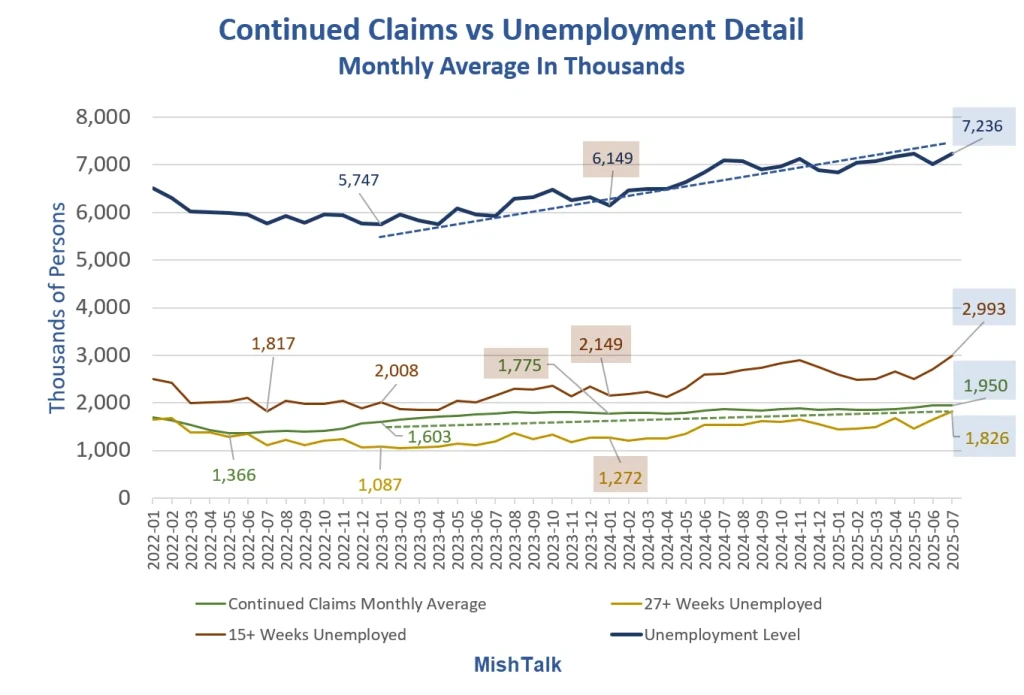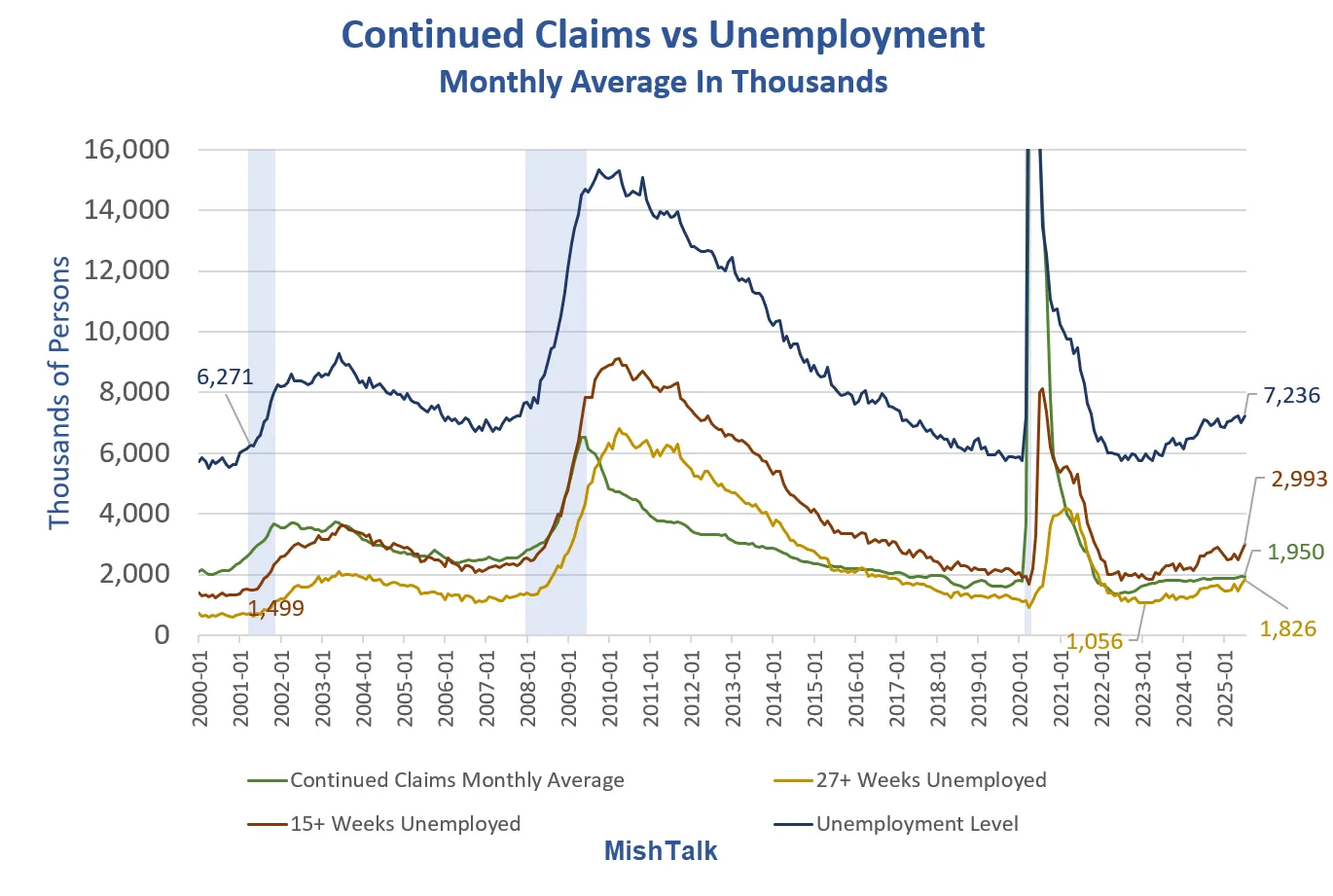A slow rise in continued unemployment claims masks a growing problem.
I created the above chart by comparing the monthly average of continued unemployment claims to unemployment levels.
Unemployment claims are from the department of labor while the unemployment levels are from the less accurate BLS household survey.
Nonetheless, the trends tell the story.
Continued Claims vs Unemployment Detail

Change Since January 2024
- Unemployment Level: 1.087 million
- 15+ Weeks Unemployment: 844,000
- 27+ weeks Unemployment: 554,000
- Continued Claims: 175,000
What’s Happening?
People have exhausted all of their benefits.
In addition, job hopping is in play.
- Eligibility: To qualify for unemployment benefits, individuals generally need to have been employed for a certain period and have earned a minimum amount of wages. Frequent job changes may make it harder to meet these criteria, especially if the job tenures are short.
- Employer Challenges: Employers can challenge unemployment claims, and a history of job hopping might be a factor they use to contest the claim. They may argue that the individual’s frequent job changes indicate they are not a reliable or suitable employee, potentially making it more difficult for the individual to receive benefits, says Swartz-Swidler.
- Temporary Work: Taking temporary work while receiving unemployment benefits can affect payments. Generally, if someone earns money from a temporary job, their unemployment benefits will be reduced or eliminated depending on how much they earn.
Maximum Weeks of Unemployment Insurance

Chart courtesy of Center on Budget and Policy Priorities
The combination of expiring benefits and job hopping reduces eligibility for making unemployment claims.
Also the self-employed are not eligible for unemployment insurance although they have to pay into the system.
Ability for the self-employed to collect benefits would lead to fraud. However, paying for benefits that one can never collect is an outright scam.
Synopsis
The slow rise in continued unemployment claims severely understates the actual unemployment problem.
Since January 2024, continued claims benefits have only risen by 175,000 while unemployment is up by over 1 million.
The number to watch is 15+ weeks unemployment, now at 844,000. That’s a whopping 78 percent of the total rise in unemployment.
Once you lose a job, it takes an increasingly longer time to find one.
So look beyond the stable (for now) initial unemployment claims to see what’s really happening.
Related Posts
August 1, 2025: Payroll Disaster, Jobs Rise 73,000 but Massive Negative Revisions
There were 258,000 negative revisions in May and June.
August 5, 2025: Troubling Trends in Student Loans, Auto Loans, and Credit Card Late Payments
90-day late payment delinquencies are elevated and rising.
August 21, 2025: Continued Unemployment Claims Jump by 30,000 to New High Since Nov 6, 2021
The labor market is much weaker than most economists realize.
For specific details discussion of why we know this. please see QCEW Report Shows Overstatement of Jobs by the BLS is Increasing
This post originated on MishTalk.Com
Thanks for Tuning In!
Mish







